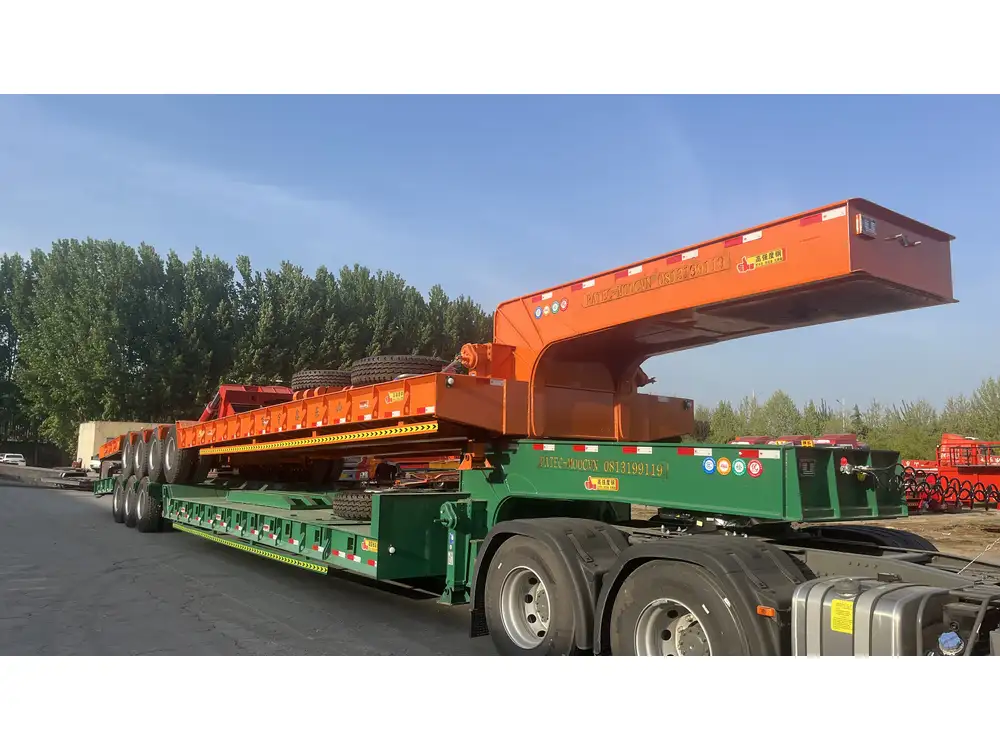Reversing a semi-trailer can be a daunting task for both novice and experienced drivers alike. However, understanding the underlying principles, acquiring the right techniques, and maintaining situational awareness transforms this complex maneuver into a manageable skill. This comprehensive guide will dissect the necessary steps, insights, and strategies to effectively reverse a semi-trailer, equipping you with the expertise to enhance your driving capabilities.
Fundamental Concepts of Semi-Trailer Reversing
Understanding Trailer Dynamics
Before diving into the mechanics of reversing a semi-trailer, it’s pivotal to grasp the basic dynamics of how trailers operate:
Pivot Point: The crucial point lies at the fifth wheel where the trailer attaches to the tractor. This point acts as a fulcrum—understanding its motion is vital.
Trailer Swing: As you reverse, the trailer moves in the opposite direction to the steering input of the tractor, requiring precise control to avoid jack-knifing.

Visualizing the Maneuver
When reversing, visual aids like mirrors and a spotter can significantly improve safety and maneuverability:
Use of Mirrors: Regularly check side mirrors to track the alignment of your trailer guidance. It’s essential to have a clear mental picture of the trailer’s path.
Spotters: Having a ground spotter can provide additional perspective and alertness to avoid obstacles and aid in alignment.
Step-by-Step Guide: How to Reverse a Semi-Trailer
Reversing a semi-trailer involves several critical steps. Each step demands a blend of technique, awareness, and finesse.
Step 1: Preparing for the Reverse
Assess the Environment: Before initiating the reverse, examine your surroundings. Look for potential obstacles—other vehicles, pedestrians, and road conditions.
Position the Tractor: Align your tractor parallel to the trailer. It may be beneficial to perform a wide turn to create optimal clearance for the reversing process.

Step 2: Engaging the Reverse Gear
Activate Signals: Use turn signals to inform other road users of your intentions. This feature reinforces safety while maneuvering.
Engage Reverse: Shift into reverse, gently applying pressure to the gas pedal while simultaneously monitoring the trailer’s trajectory through your mirrors.
Step 3: Executing the Reverse
Steering Technique: To navigate the trailer’s path:
- If the trailer swings to the left, turn the steering wheel left to counteract the swing.
- If it swings to the right, turn right. This counterintuitive movement is essential for maintaining control.
Progressive Control: Use small adjustments rather than large steering inputs. Gentle corrections avoid overreacting and losing control of the trailer’s path.
Step 4: Monitoring Progress
Constant Mirror Checks: Regularly glance at your mirrors to remain aware of the trailer’s pivot point and trajectory.
Adjusting Speed: Maintain a slow, consistent speed. Rapid acceleration can lead to loss of control and misalignment.

Step 5: Final Positioning
Finalize Alignment: As you near the desired position, gradually straighten your steering wheel, guiding the trailer into its final spot.
Stop and Secure: Once positioned, come to a complete stop and engage the parking brake to secure the vehicle.
Common Challenges and Solutions
Navigating the intricacies of reversing a semi-trailer may present various hurdles. Understanding potential challenges equips drivers with preemptive solutions.
| Challenge | Description | Solution |
|---|---|---|
| Jack-knifing | Occurs when the trailer makes severe angles to the tractor. | Maintain smooth, controlled steering; practice makes perfect. |
| Limited space | Tight locations make it challenging to navigate. | Evaluate surroundings before proceeding; utilize spotters. |
| Visibility issues | Blind spots can hinder spatial awareness. | Use mirrors effectively and have a partner assist where possible. |
| Wind Effects | High winds can affect trailer stability. | Measure the winds and adjust speed; remain cautious. |
Tips for Enhanced Reversing Skills
To further refine your reversing capabilities, consider implementing the following tips:
Practice Regularly: Take time to practice in a safe, open area before attempting more complex maneuvers.
Engage in Training: Formal training with skilled instructors can provide deeper insights and techniques that enhance confidence.
Utilize Technology: Advanced truck navigation systems feature reversing aids, including cameras and sensors, which can substantially improve your spatial awareness.
Learn from Others: Collaborate with experienced drivers to learn from their methods and share tips.

Important Safety Precautions
Safety is paramount when operating heavy machinery. Observing key safety considerations can prevent accidents and injuries:
Avoid Distractions: Stay focused both inside and outside the vehicle. Mobile device use should be strictly prohibited while maneuvering.
Assess Ground Conditions: Rain, snow, or ice can dramatically affect traction and control. Adjust your approach accordingly.
Communicate Clearly: If using a spotter, establish clear hand signals to ensure effective communication.
Conclusion
Mastering the skill of reversing a semi-trailer is essential for any professional driver. Through understanding trailer dynamics, following systematic steps, overcoming challenges, and adhering to safety measures, you can significantly enhance your driving precision and confidence.
By practicing these techniques in various settings, you not only bolster your technical abilities but also contribute to safer road environments for all. Whether you are an industry veteran or new to the field, honing the skill of reversing a semi-trailer will undoubtedly serve you well throughout your driving career.



